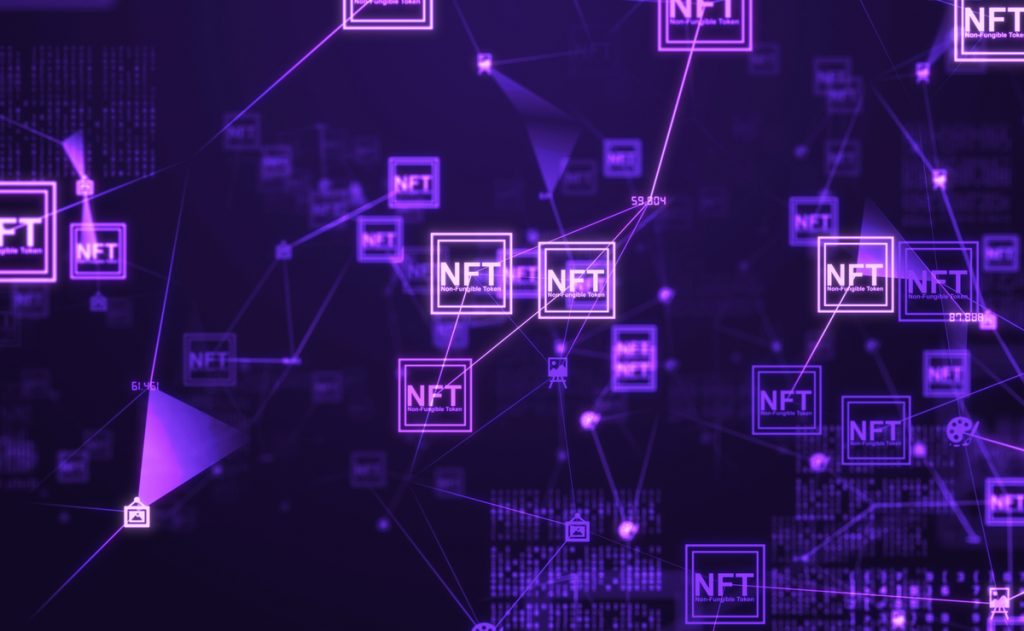Highlights –
- NFTs are becoming a significant part of the digital landscape because they provide marketers with innovative ways to interact with their users and offer them engaging experiences.
- With a well-executed plan, marketers can use NFT efficiently to reach their target audience, increase brand awareness, and promote/sell new products.
With the dawn of the digital age, brands want to increase their online presence and invest in top-notch digital marketing strategies. But while designing and executing a digital marketing strategy, it’s essential to keep up with the latest developments. There’s nothing like it when brands can use these advances to their benefit!
In this digital age, owning a virtual item brings with it high satisfaction levels, somewhat similar to its tangible counterparts. The most sought-after are those digital items that are one of a kind, like NFTs – Non-Fungible Tokens – a buzzword that has taken the world by storm.
But what’s all the hullabaloo about NFTs? All we know is that they’re simply intriguing and offer numerous opportunities for digital marketing even though the future of this technology is not clear. Let’s dive in to know interesting facts about NFTs in this blog.
What are NFTs?
In simple terms, NFTs are non-interchangeable digital assets, with each one of them having its characteristics. One NFT can be worth more than another because of its artistic significance and rarity.
Like any physical asset, these digital assets can be bought and sold. The token is encoded with a unique code, which makes each NFT unique. The token becomes the digital certificate of ownership.
NFTs represent music, art, videos, and in-game items. For example, a music-related NFT can be a high-end version of a new album that grants lifetime front-row concert tickets. A gaming-related NFT could mean purchasing the rights to an in-game digital character. Since the NFTs are created, minted, and uploaded like cryptocurrency to the blockchain, there is more authenticity than traditional digital items.
How is NFT related to digital marketing?
While it’s too early to gauge the effect of NFTs on businesses, they are fast becoming a significant part of the digital landscape because marketers, brands, and even sales departments can verify authenticity by establishing unique identifiers for each token.
Businesses can track products throughout the supply chain and collect customer data securely and transparently. Plus, customers can use NFTs as loyalty rewards or discounts.
They provide marketers with innovative ways to interact with their users and offer them engaging experiences.
Furthermore, these digital assets can help increase the users’ loyalty and even reward them for participating in the campaigns.
Here are a few advantages of NFTs that can help companies serve their clients better:
Advantages of using NFTs for digital marketing
- To create a multi-faceted digital consumer connection: While the world is abuzz about the metaverse and digital assets, it won’t be long before NFTs might be the primary digital touchpoint between customers and businesses. Marketing with NFTs can be the best because it encourages the users to participate in events, exchanges, and campaigns, rather than just receiving them passively without doing anything.
- Enhances brand identity: Not every brand in the business would want to generate or sell art in the long run. Hence, it’s important to link an NFT collection with the brand identity. As Web3 technology is growing gradually, brands can still start to connect products and services to NFT in small ways. For example, it’s possible to flip the idea of an NFT as a digital token that shows that you own a physical product by linking that item to a digital NFT collectible.
- Can help in pre-orders: It can be a good idea for brands to use NFTs to create public interest and boost pre-orders. Businesses can use NFTs to track products throughout the supply chain and collect customer data securely and transparently.
- Aids in customer engagement: NFTs can help companies identify their loyal customer base – which won’t stop talking about them and believe in what the brand stands for. Firms can also create more meaningful relationships through various engagement strategies. Once the connection is made, customers are ready to pay for premium products and exclusive experiences concerning the brand.
- Grow community: The world is slowly moving toward a cookie-less internet, making it difficult for marketers to track and advertise the way we have over the last five years. As data privacy laws become stricter, digital marketers will have to remove cookies and create first-party customer data. This will be most useful for the most premium and loyal customers. NFTs provide brands with the opportunity of building a new email list for a private and decentralized Web 3.0. NFTs have become more critical in the virtual environment of the emerging metaverse world. Brands will be able to recognize their user without revealing their real-world identity. Even though a brand’s NFT may have been allocated as a reward or is sold to enable unique experiences, brands can get the additional benefit of being able to personalize for their customers. This is why NFTs will be an essential aspect of the VR experience.
- Support a worthy cause: Brands are taking a more public-spirited approach and finding ways to support causes they care about. It shows customers that a brand not only provides good products but also cares about giving back to the community.
For example, a brand launches an NFT collection with a 3D artwork showcasing a conservation issue. The company then declares that for every NFT sold, it would sponsor a specific amount for conservation efforts. The company may even give proof of contribution stickers or certificates that the contributors can display on their social media pages. This can get the company extra publicity, and at the same time, it can create an emotional engagement with its customer base.
Ways to Use NFT
The concept of NFTs might look complex but let’s get some inspiration from the ways brands can use NFTs:
- Digital loyalty card: A loyalty card can be a great idea to keep the customers hooked to a particular brand. Users can download the loyalty NFT card on their phones when they sign up. They can simply scan the NFT code to earn loyalty points whenever they purchase from the brand. The user can also enjoy benefits like discounts, rewards, or tokens that they can use for in-store purchases.
- Promotional discounts: Brands may offer coupons, BOGO deals, event tickets, or promotional discounts issued with counterfeit-proof features. It’s impossible to duplicate or tamper with blockchain and QR codes, ensuring the guarantee.
- Collectibles: Brands can create digital collectibles with the help of NFTs. For example, a TV show/movie franchise can make an NFT for a character for its fans.
To sum it all up…
Few people might truly understand what NFT really is, but there’s a massive surge in interest. Also, NFT strategies are not for attracting attention for a fleeting moment but are helpful for long-term growth. With a well-executed plan, marketers can use NFT efficiently to reach their target audience, increase brand awareness, and promote/sell new products.
What are you waiting for?
Visit our Whitepapers on Social Media Marketing here .







































































